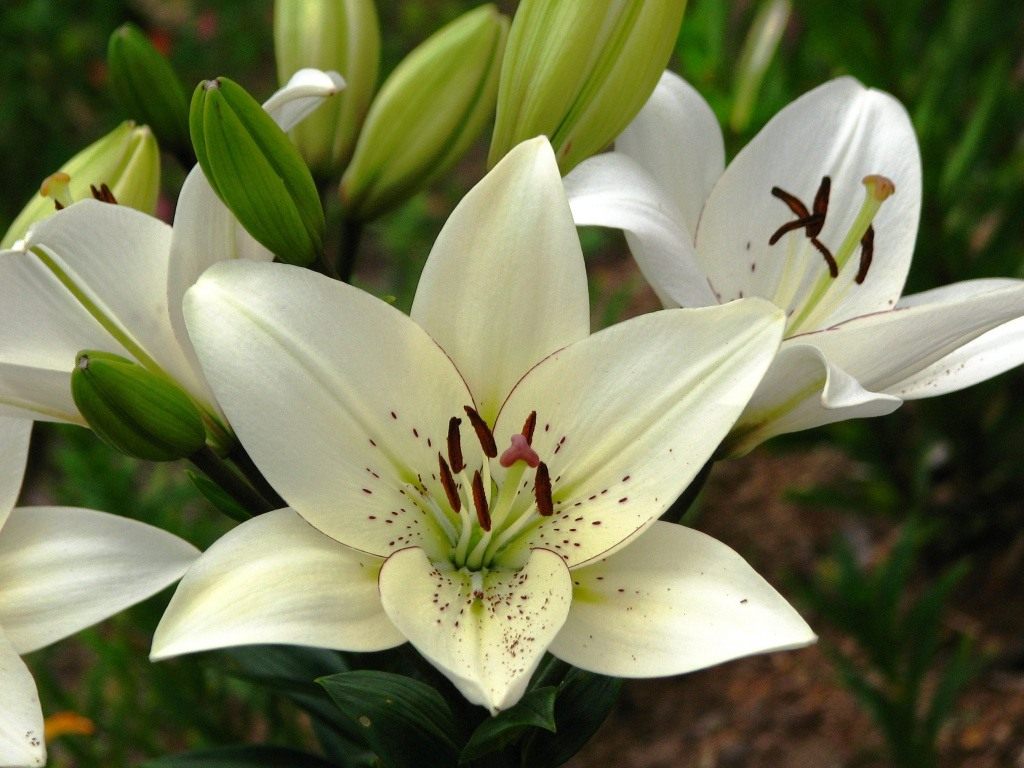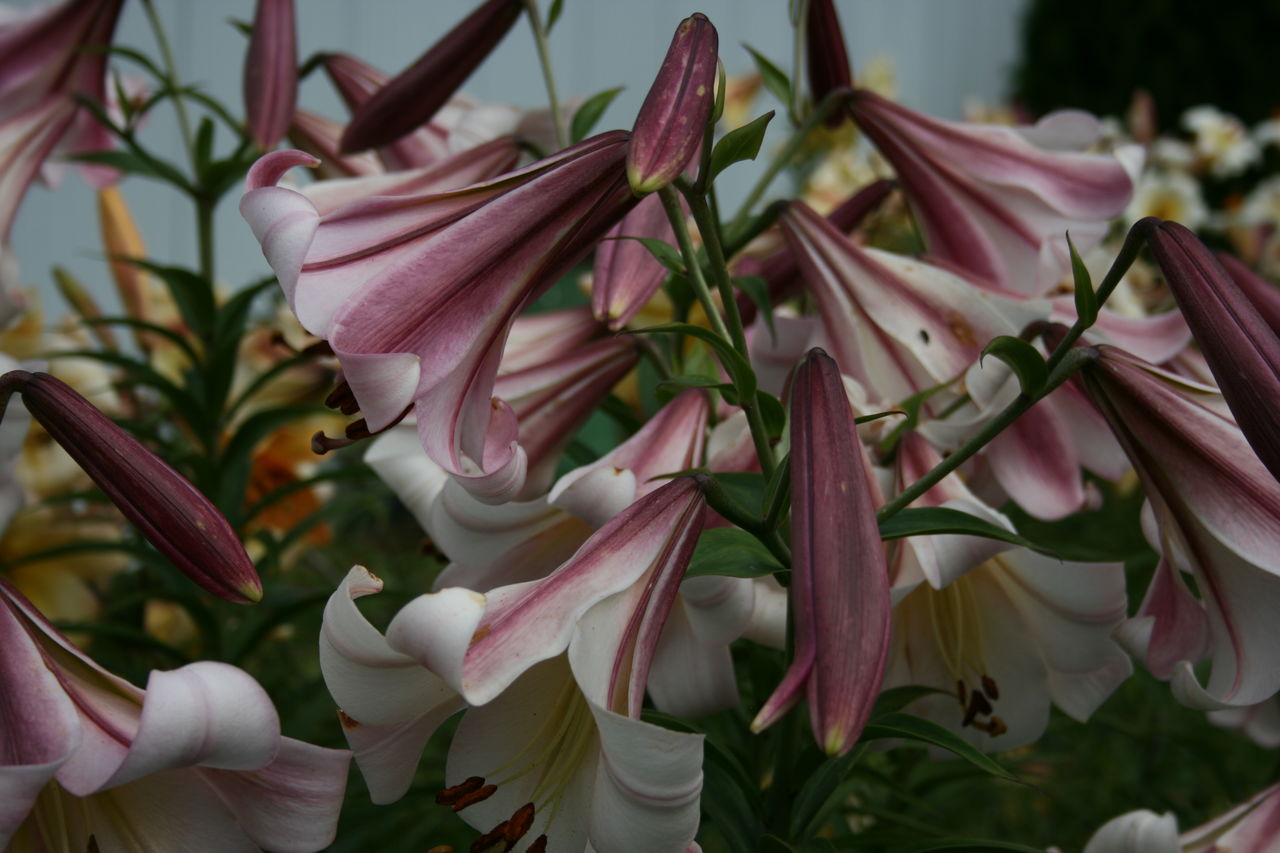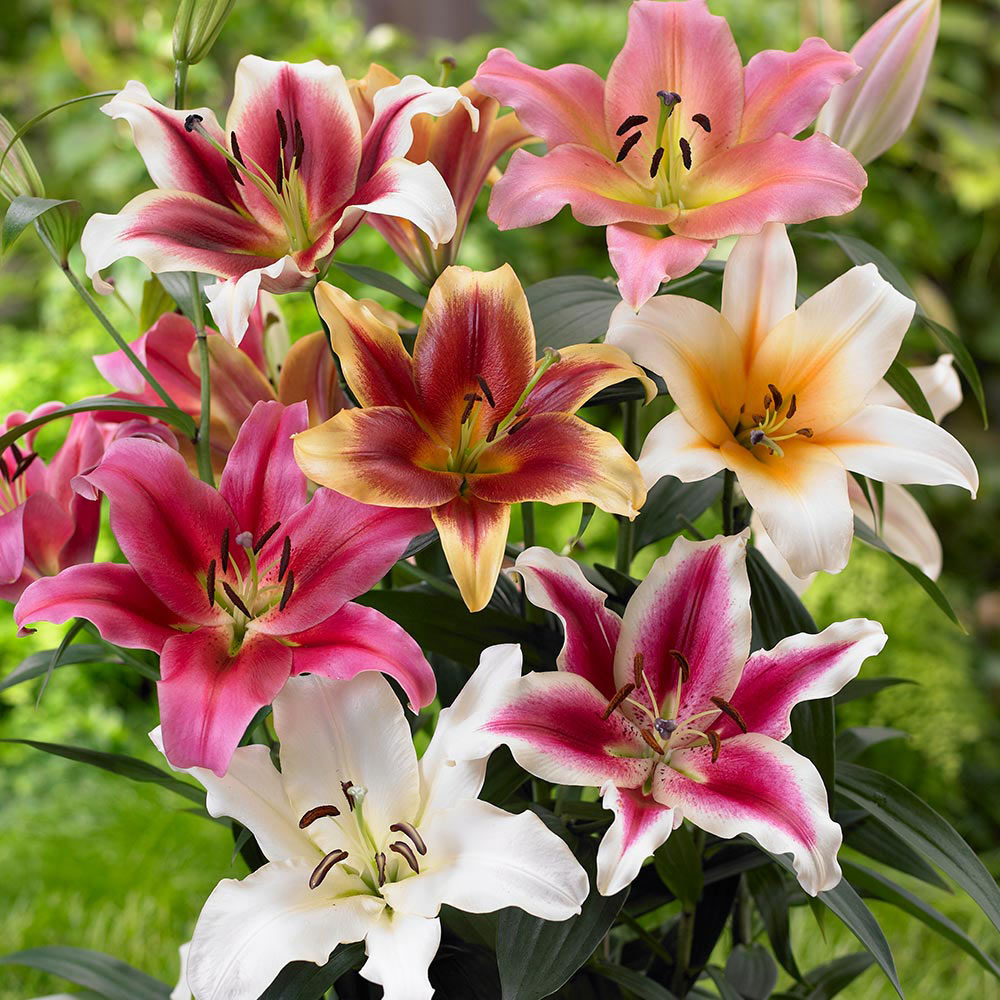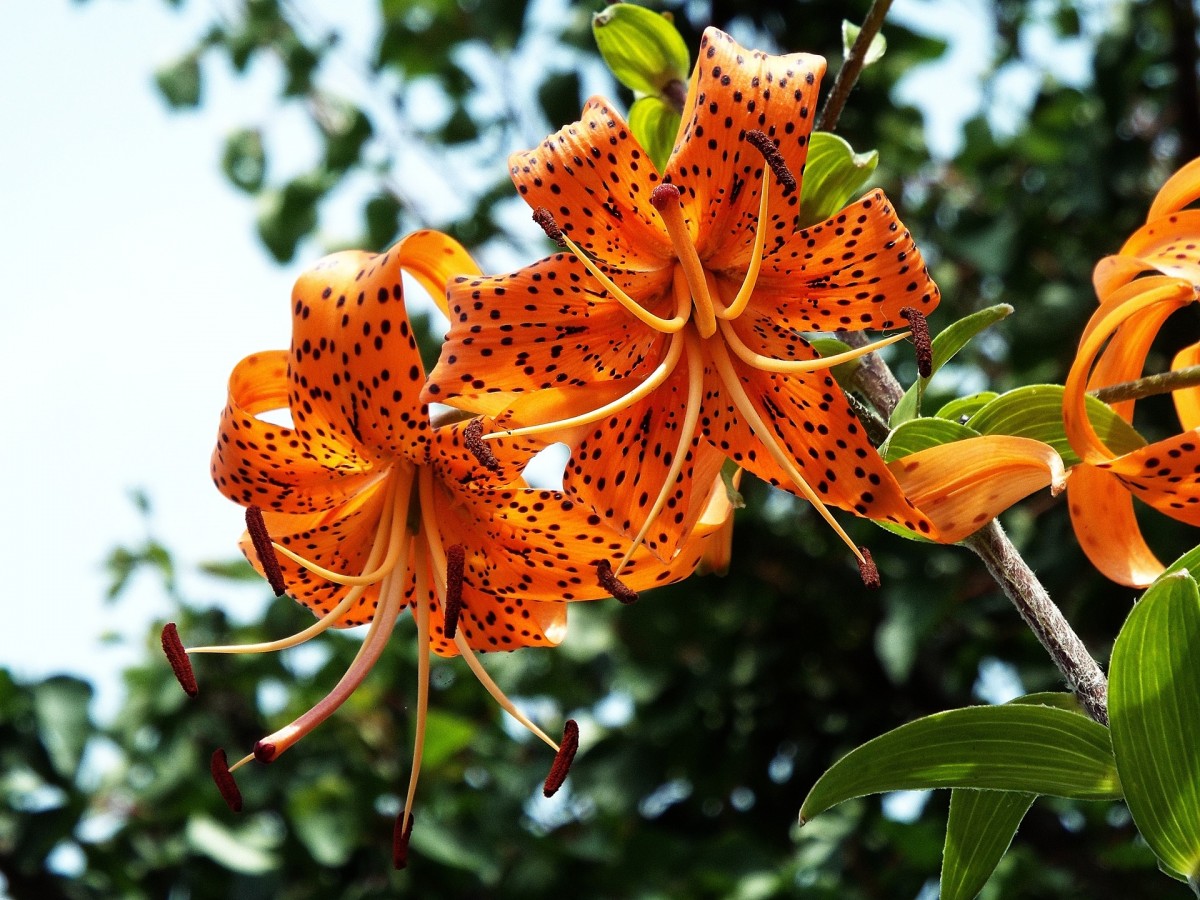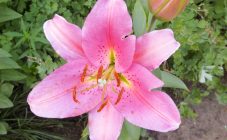Content:
Florists love lilies for their unpretentiousness. Beautiful garden flowers will be a decoration for any site. Hybrid plants have their own characteristics and subtleties of cultivation, so many growers do not want to breed them. To grow lily hybrids in the climatic zone of Russia, you need to know some tricks.
Lily features
This gorgeous, fragrant flower is believed to be of Asian origin. The perennial bulbous plant has more than 100 species. The stem height varies from 40 cm to 2 m, depending on the cultivar and variety. Beautiful green leaves are arranged in a spiral shape along the stem. Flowers are tubular, cupped, turban-shaped. You can plant one at a time and plant large areas.
Lily hybrids appeared at the end of the 19th century, and since then, breeders have been constantly working on improving garden flowers, creating real masterpieces with a varied color palette and the most delicate aromas. Compared to their wild cousins, they have many positive features: pleasant aroma, resistance to climatic conditions, various color shades. The most common representatives are LA-, OT-, OA-, LO-, LOO-.
Lily hybrids
LO hybrids of lilies
These plants were obtained by crossing oriental and long-flowered hybrids. They can reach a height of 120 - 140 cm and have a mild, pleasant aroma. Flowers have a large tubular shape.
LA hybrids
LA hybrids of lilies - what is it? The easiest flowers to grow. You don't need to make every effort to get flowers in this group. Even a beginner will achieve remarkable results after landing. Representatives of these hybrids have large inflorescences in the form of a bowl or a cup, some plants combine both. The color of flowers can be very diverse: from pale white to maroon.
LOO hybrids
LOOL lilies are hybrids, which are one of the latest developments in breeding. Plants have giant flowers with a diameter of 40 cm. They adapt well to bad weather and can easily survive the winter cold. In the description of LOO-hybrids of lilies, it is said that their only drawback is not too much variety of color shades. The buds are most often white or pink.
OT hybrids
The hybrid lily of this group has tubular flowers and a very strong peduncle. They have a pleasant and delicate aroma. They are grown not only in greenhouse conditions, but also in the open field. They reproduce well and are less prone to diseases than the rest of their fellows. These flowers can grow up to 2 m in height.
Orleans hybrids
These beautiful flowers of various shades are whimsical to growing conditions. They need warmth, so you need to plant them in sunny places. The stems are quite tall and need a garter. A slightly alkaline neutral soil is required for planting.
Tetraploid hybrids
They are a new representative of the Asiatic lilies. A tall and unpretentious plant is distinguished by abundant flowering and winter hardiness due to an increase in the number of chromosomes. Tetraploid hybrids of lilies can be grown even in Siberia and get quite exuberant flowering.
Popular varieties
The most popular plants for flower growers are:
- Lilia Elusiv. Belongs to the group of OT hybrids. It was obtained by crossing several species. The flower stem reaches a height of almost 2 m. The inflorescences are large, have different shades and a pleasant aroma.
- Lily Orania. Large funnel-shaped flowers are directed to the side or up. Up to 30 pieces bloom on one stem. Colors can be from white, yellow and orange to bright red and maroon. Lily Orania belongs to the group of OT-hybrids and has all the advantages inherent in plants of this variety.
- Lily Pink diamond. This royal flower has a giant inflorescence and a variety of colors. The plant loves sunny warm places and is afraid of drafts.
Planting and leaving
Plants are planted in the fall in prepared soil. In early spring, you can plant bulbs of the eastern group and LO-hybrids. The remaining representatives of the perennial lily take root best if they are planted in winter and well insulated.
First you need to choose the best place. It is best suited to a site on a hill and on the sunny side. In one place, the lily will grow from 3 to 5 years, so the soil should be fertilized first. The soil should be fertile and have a loose texture.
Peat, humus and wood ash are added to the prepared hole. Fertilizer proportions may vary depending on the plant variety. For example, LA lilies are hybrids, planting and caring for it does not require additional effort. They are among the most unpretentious colors. And Orleans lilies do not like acidic soil, so it is important not to overdo it with feeding with them.
After preparing the site, you can proceed directly to planting. The bulb is neatly laid out on the bottom of the pit and covered with earth. Then the hole needs to be watered well. To protect young sprouts, the holes are covered with cut plastic bottles on top.
It is recommended to take care of the plants throughout the season. Not only profuse flowering will depend on proper care, it will prevent the appearance of diseases and the invasion of pests.
- Plants need to be watered regularly.
- In the fight against pests, it is worth spraying the stems with special preparations and collecting the larvae by hand.
- For the winter, lilies are covered with sawdust or spruce paws.
- Tall stems need a garter.
Nearly all flower varieties adapt well after being planted outdoors. So that the plantings are not dense, lilies need to be transplanted regularly.
Reproduction
To grow flowers on the site or for sale, you need to know how to get the shoot correctly. The most common breeding methods are:
- Dividing the bulb. Small nodules periodically form next to the mother's bulbs. In the fall, the bush can be carefully dug up and separated for replanting.
- Reproduction by scales. A third of the scales must be separated from the bulb and planted in prepared soil.
- Cuttings. The cut off part of the stem with the bud should be planted in the ground. After a month or two, you can separate the resulting bulbs and plant them in a container.
Diseases and pests
Lilies are not too susceptible to disease, but if signs are still found, it will be difficult to fight the disease. The plant immediately begins to lose its decorative beauty, the leaves wither and turn yellow. The main vectors of infections are harmful insects and rodents. To protect your site from the invasion of aphids, flies and beetles, you need to carry out treatment with special preparations every spring.
Compliance with the rules of planting and caring for lily hybrids will result in unusually beautiful flowering of various shades. Moreover, such beauty will delight the grower for more than one year. But there is one drawback - varietal flowers are quite expensive. Although this stops few people, even novice gardeners.
